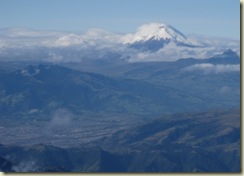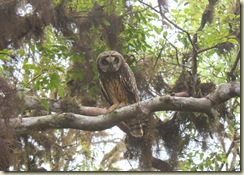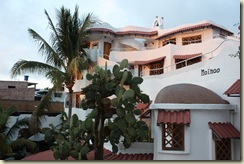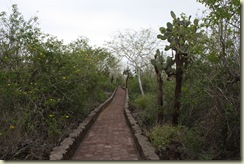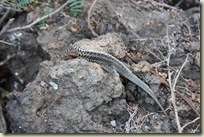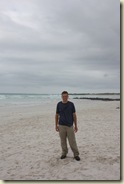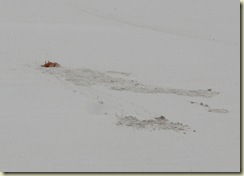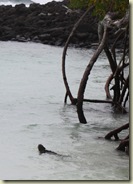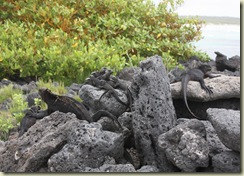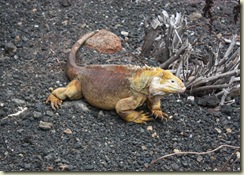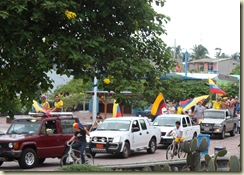Third day of diving. Today we were going to the far away island of Floreana. The ride was about 2 hours each way on a speed boat. The weather was deteriorating, so the result was a very bumpy and long ride so after 5 minutes, I decided to take a motion sickness pill. My companions were a 15-person group from Argentina. There are diving buddies that go on trips around the world. Their level of experience was very varied. From quite advanced to just beginners. We had 2 boats (8 people in each boat), with two dive masters in each boat. The head dive master was very different than the ones the previous days as he kept us in a very short leash. He also made the huge mistake of not doing a buoyancy check which resulted in an incredible waste of time and air in the first dive when half the group didn’t go down and we had to sit on the bottom waiting for them. These dives were very easy and, combined with having a good buddy (Carlos), I felt pretty comfortable which reflected on my bottom times.
Here are the stats for the dives:
| Dive | Max Depth | Avg Depth | Bottom Time |
| 1 | 55ft | 40ft | 60mins |
| 2 | 89ft | 43ft | 45mins |
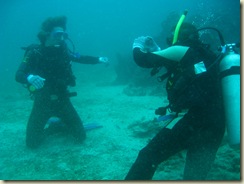 | Picture taken while waiting for the other divers to come down. |
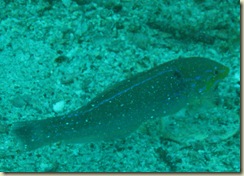 | Wrasse |
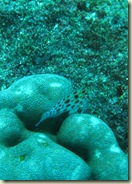 | Juvenile Puffer Fish |
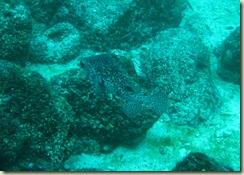 | Adult Puffer Fish |
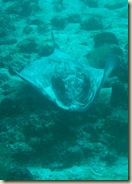 | Sting Ray |
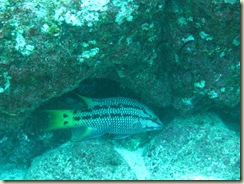 | Streamer Hogfish |
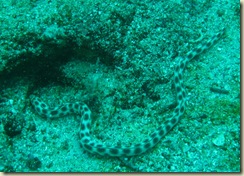 | Tiger Snake Eel |
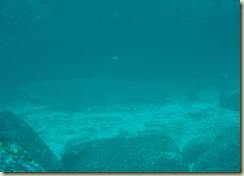 | White Tip Reef shark |
During the surface time between the two dives, we moored in a protected bay to have lunch. The lunch was excellent, a nice grilled fish with a prawn creamy sauce (I wonder if my complaint about the food the previous day was the reason). After lunch, we had some time to go snorkeling where I had some very close encounters with Sea Lions and turtles.
The Sea Lions in Galapagos are genetically California Sea Lions. However, they exhibit different behaviors (particularly on raising the young) which has led some scientists to rename the subspecies Galapagos Sea Lions. In any case, they are very playful and curious and they are such an excellent predator that they have plenty of time to just relax on the beach. It’s one of the few animals that are encountered everywhere in Galapagos.
I also find a green turtle feeding underwater.
After the surface interval, we headed to a more “advanced” site. There, we did a drift dive next to a cliff wall with plenty of caves with lots of life from fish to sharks. Unfortunately, my cave pictures are pretty bad given that I didn’t have a diffuser for my flash.
Underwater Turtle. We found this turtle at about 60ft.
Free diving next to a wall. It’s an interesting experience to just “fly” next to the wall, heading up and down as you find caves and sea life. It’s also a very good exercise on buoyancy control.
When we were at 40ft, a sea lion came to check us out. It was swimming very close to each of us, looking carefully and sometimes nipping on a diver fin. At one moment, he got very interested in my camera so I was lucky to get some closer shots of him (some of them too close).
Carlos with the sea lion under us.
Playful Sea Lion
At one time, we found a huge cave under us and we headed there (reaching the deepest depth of the dive). The cave was full of sharks, packed like sardines. There were maybe 20 of them in there. After they noticed us, a couple of them swim out, looking for a quieter place.
Due to some scheduling problems, my travel agency had to put me for my last night in Puerto Ayora in a different hotel: the Red Boobie. The hotel, although less charming than the Mainao, was as clean and the staff as friendly. Breakfast was a notch better and they have a fantastic rooftop swimming pool. The hotel is also more centric than the Mainao, but everything in Puerto Ayora is so close, that that just mean walking two blocks less to get to the harbor.
After a quick shower, I connected again with the Argentinean troop who invited me for dinner in their hotel. They were very nice people, I wish I can join them for a future dive in the future.

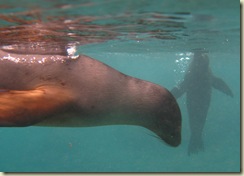

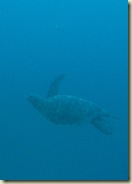
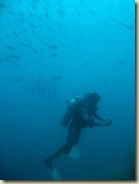
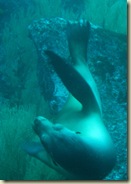
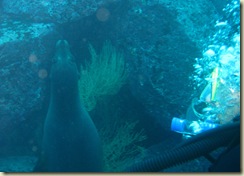
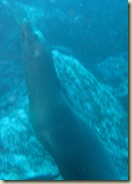


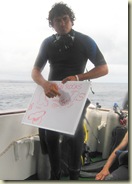
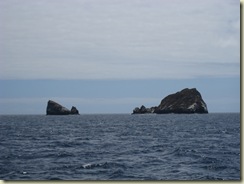
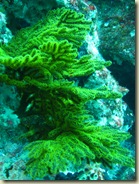
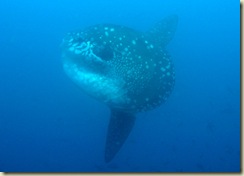
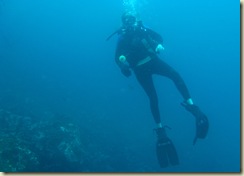
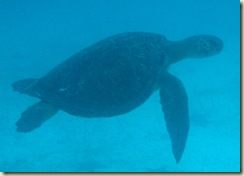
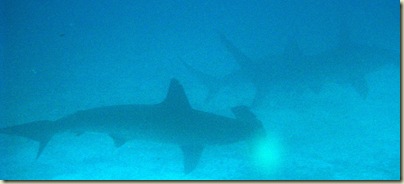
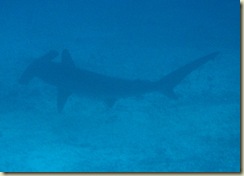

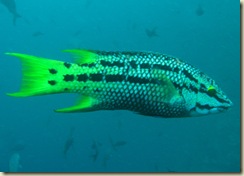
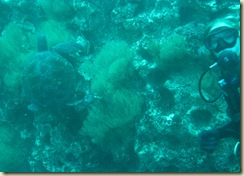

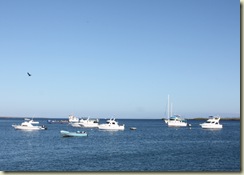
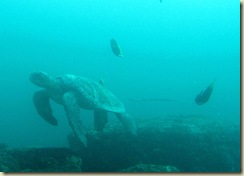
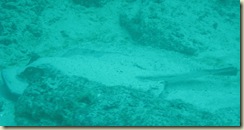
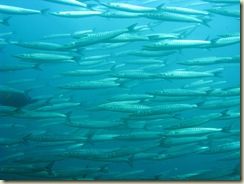
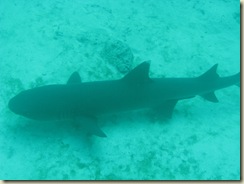
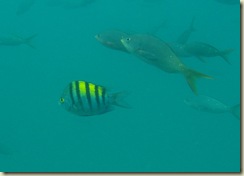
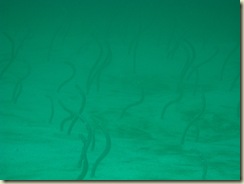
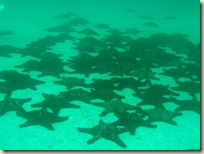
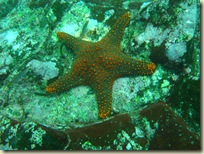
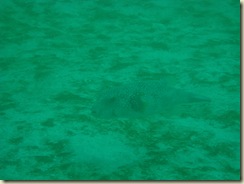
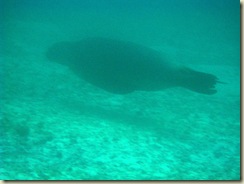
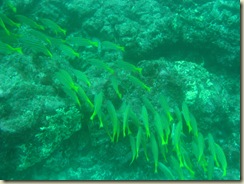
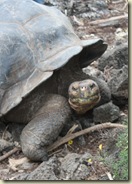
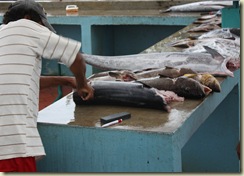
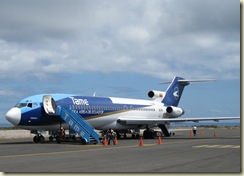 Today is traveling day to Galapagos. I woke up very early to get to the airport for my morning flight. The Domestic Terminal was busy with big groups of kids going on trips. However, check in was easy and fast. In addition to the typical airport security, there was an additional check to make sure my luggage was free of fruits and insects.
Today is traveling day to Galapagos. I woke up very early to get to the airport for my morning flight. The Domestic Terminal was busy with big groups of kids going on trips. However, check in was easy and fast. In addition to the typical airport security, there was an additional check to make sure my luggage was free of fruits and insects.